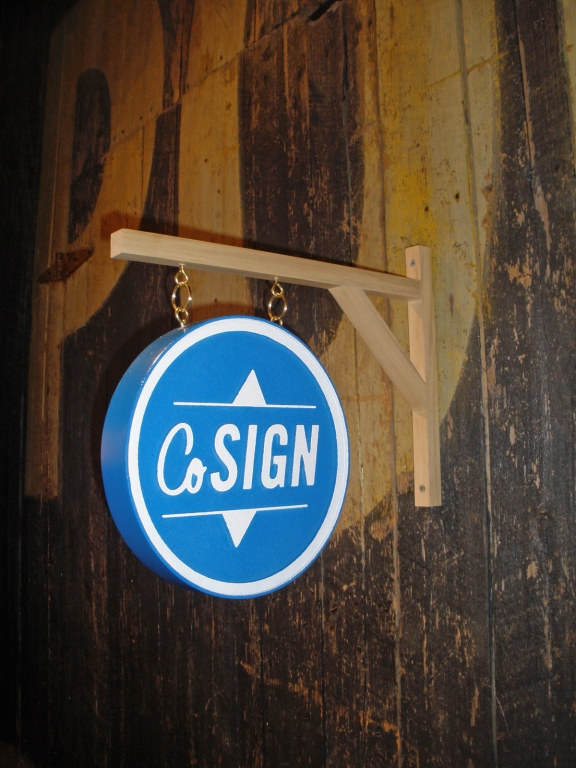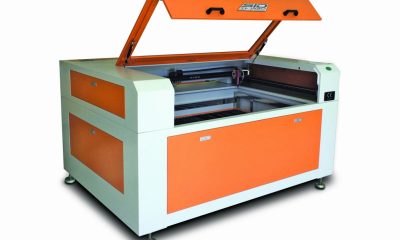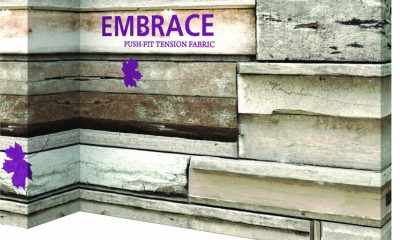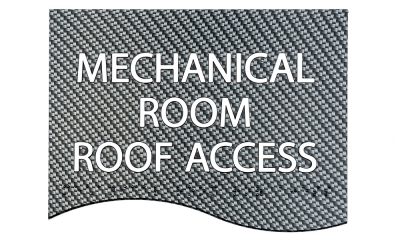CoSign Goes National
High-quality signs to spur small business growth in Illinois, Florida and Iowa
Published
7 years agoon

As this issue of ST was going to press, officials from five US cities were gathering at the American Sign Museum (February 20-21) in Cincinnati for a workshop. There, they would learn about the synergy of design and fabrication to produce the most valuable marketing device for an independent business – its on-premise sign.
Their instruction wasn’t merely theoretical. The definitive end result would be approximately 40 new signs as part of the CoSign program (Cincinnati; cosigncincy.org/program). While three iterations of CoSign were rolled out individually in the greater Cincinnati area over the past three years, 2017 marks its evolution into a template for nationwide replication. Hence, ASM workshop attendees came from Iowa, Florida and Chicago, and potential future participants traveled from rural Kentucky.
COFOUNDING COSIGN
The CoSign project began in 2012 as a collaborative effort between the American Sign Museum (ASM) and the Carol Ann and Ralph V. Haile, Jr./US Bank Foundation, which provided $150,000 for the inaugural CoSign project. The Haile Foundation funds projects that involve both the arts community and economic development – perfect for signs. Specifically, Eric Avner, senior program manager for community development for the foundation, worked with ASM Founder Tod Swormstedt [full disclosure: Tod is also my brother, and the museum is supported in part by ST’s parent company, ST Media Group].
Tod said, “CoSign ties in perfectly with the museum’s vision statement, which is ‘To promote the significant contribution signs make to commerce, culture and the American landscape.’ Whereas the museum itself chronicles the history of signs, CoSign documents the current and future economic value of signs.”
The project brings merchants, designers and sign fabricators together, and everyone develops a greater under-standing of each other’s viewpoint. The pilot project included the unveiling of 11 projecting, non-electric signs in Cincinnati’s eclectic Northside neighborhood in November 2012.
CREATING A REPLICABLE PROCESS
Cate Becker is serving as the 2017 CoSign project director. She first became involved with CoSign when she served as the cultural arts director for Covington, KY, when it hosted the 2014 CoSign program. She and her husband operate a Covington design firm called BLDG, and she said the project marries the burgeoning business district’s goal to align arts initiatives with economic development. “What sets CoSign apart is its focus on the intersection of visual design, small business, fabrication and the built environment,” she said. “Brought together, these disciplines and audiences created visually impactful signs that became a source of civic pride for the neighborhood and the basis of discussion for a collective vision of what we can accomplish together.”
Avner said, “We did recognize that this is a replicable process. This does have interest nationally. Communities all over the place are looking to have an experience like Northside’s. We’re building something that’s compelling to people.”
AdvertisementJosh McManus, who founded a non-profit group called Little Things Lab, noted that CoSign was the first project funded through his “Haile’s Kitchen” program. “I think CoSign gives an entirely new imagination of what signage in the public realm can be,” he said. “And it also has a direct benefit to the businesses in that they’re much more visible now.”
Queen City Project videotaped interviews with some of the participating merchants and produced a six-minute video. In it, Timothy Stewart, the owner of Tone House Music, stated, “After the sign went up, people stopped in and said, ‘Oh, I didn’t know there was a music store here.’ The very day the sign was unveiled, my traffic doubled, and it’s been that way ever since.”
COLLABORATING ON ANOTHER TEN SIGNS
CoSign 2013 returned to Northside with another $150,000 grant, this time from ArtPlace America (artplaceamerica.org). The collaborative describes its focus as “creative placemaking, which describes projects in which art plays an intentional and integrated role in place-based community planning and development.” This time, 10 new signs were created.
Dominic Lopresti, who owns Spun Bicycles with his wife, Judi, also appeared in the Queen City Project video. Although he became a 2013 CoSign participant, he lamented, “When we got this place in January [2013], I was so bummed that we’d missed year one [the November 2012 launch of CoSign]. It’s an awesome opportunity, especially for someone starting a new business. We were lucky to be a part of it.”
Jason Snell, who designed the Spun Bicycles sign and two other CoSign signs, noted, “I always design for outcome. You think about ‘How is this going to look on a wall?’ or ‘How is it going to look on a billboard?’ And now you start thinking about the 3D and about the exterior and materials. For me, I’ve definitely changed my design approach.”
Lee Diss, who designed the sign for HazelGlas said, “I’ve never designed anything before for outsourcing. In talking with the fabricators, there were things I never thought about – wind, water. Something we designed had to live out in the elements for years and years.”
AdvertisementNathan Currier-Groh, a Northside resident who fabricated the Listing Loon sign, said, with signs, “Too often, cost is put first, and businesses end up with mundane signage. And the neighborhood ends up looking like every other neighborhood. But with a little higher budget, rather than having commodity products, we have beautiful products that add to the neighborhood.”
SPREADING THE WORD
Building on this success, CoSign moved across the Ohio River in 2014 to Covington, KY. Funding again came via $200,000 from ArtPlace. Additionally, the effort received $50,000 from an Our Town grant bestowed by the National Endowment for the Arts (NEA). (In its third year of funding, the Our Town program awarded $4.7 million to 59 entities in 34 states.) The Covington project yielded nine new signs and, for the first time, some were internally illuminated. The city recognized CoSign with its River Cities Excellence in Preservation Awards.
A grant from ArtPlace then paved the way for CoSign to branch out nationally in 2016, and thus the initial concept of creating a template began. However, all of the 2017 CoSign communities will be funding their own projects.
Interestingly, the 2017 CoSign program influenced a potential sign-code change even before it officially started. Projecting signs (which provide significantly improved visual acuity over fascia/building signs), have been a cornerstone of the first three CoSign iterations. When West Des Moines, IA (more specifically, its Historic Valley Junction district) became interested in CoSign, it decided to review and possibly revise its sign code, which didn’t allow projecting signs, observed Tim Reinders, a design specialist for Main Street Iowa, a subsidiary of the Iowa Economic Development Authority. A representative from Main Street is slated to attend the CoSign workshop.
“CoSign is a synergistic collaboration between artists and sign fabricators,” Reinders said. “It’s perfect for community development. We’re really excited about this. We want to figure out how to facilitate the CoSign concepts and continue it on a statewide basis.”
Reinders noted that Main Street Iowa has been facilitating “challenge grants” for the past 14 years as part of its Downtown Resource Center program. Matching grants of $75,000 are awarded, and he would like to see the CoSign concepts implemented.
AdvertisementRepresentatives from Iowa City are also scheduled to attend the CoSign workshop. Although Iowa City isn’t a Main Street participant, Reinders said he is working with that city with marketing and documentation for CoSign there.
FINDING FUTURE PARTICIPANTS
The CoSign sequence is explained on its Facebook page:
“The six-month-long project commences with the location of businesses along a corridor that are willing to participate in the project. A call-to-artists is also made. Business owners and interested artists are then invited to attend a brief workshop session, held at the American Sign Museum, that gives an overview of the economic value of signage along with important permitting requirements. Presentations by noted sign designers, as well as demonstrations of fabrication and installation techniques are made as well.
“Following the workshops, artists submit designs for specific businesses of their choosing. Businesses have an opportunity to select the proposals they like best, establishing a partnership between themselves and the visual artist. Business owner/artist teams then collaborate with expert sign fabricators during a rapid prototyping workshop to solidify their final designs.
“A jury then selects the top ten teams – based on concept, construction, and context – to move forward to fabrication. Upon selection, each business owner/artist team works with a sign fabricator to ensure their design can be fabricated on time and within budget.”
The 2017 CoSign program will emulate one aspect of its three predecessors in that all took or will take place in urban settings. One workshop attendee group is expected to come from rural Kentucky. Would the CoSign tenets work in such an environment? Perhaps a CoSign 2018 could provide some answers.
And perhaps even more important are bigger-picture plans to document the actual ROI of this year’s specific CoSign project through university-assisted research. Such empirical data would bolster the sign industry at large.
Wade Swormstedt is the executive director of the Foundation for the Advancement of the Sign Industry. Contact him at wade@fasi.org.
SPONSORED VIDEO
Introducing the Sign Industry Podcast
The Sign Industry Podcast is a platform for every sign person out there — from the old-timers who bent neon and hand-lettered boats to those venturing into new technologies — we want to get their stories out for everyone to hear. Come join us and listen to stories, learn tricks or techniques, and get insights of what’s to come. We are the world’s second oldest profession. The folks who started the world’s oldest profession needed a sign.

Orbus Celebrates Earth Day With Recycling Achievements

American Sign Museum Names New Executive Director

3 Things Print Pros Must Do to Build Stronger Relationships in the Interiors Market
Subscribe

Bulletins
Get the most important news and business ideas from Signs of the Times magazine's news bulletin.
Most Popular
-

 Tip Sheet1 week ago
Tip Sheet1 week agoAlways Brand Yourself and Wear Fewer Hats — Two of April’s Sign Tips
-

 Photo Gallery2 days ago
Photo Gallery2 days ago30 Snapshots of the 2024 ISA Sign Expo
-

 Ask Signs of the Times4 days ago
Ask Signs of the Times4 days agoWhy Are Signs from Canva so Overloaded and Similar?
-

 Real Deal1 week ago
Real Deal1 week agoA Woman Sign Company Owner Confronts a Sexist Wholesaler
-

 Benchmarks7 days ago
Benchmarks7 days ago6 Sports Venue Signs Deserving a Standing Ovation
-

 Women in Signs1 week ago
Women in Signs1 week ago2024 Women in Signs: Megan Bradley
-

 Photo Gallery1 week ago
Photo Gallery1 week ago21 Larry Albright Plasma Globes, Crackle Tubes and More
-

 Women in Signs1 week ago
Women in Signs1 week ago2024 Women in Signs: Ashley Borell











